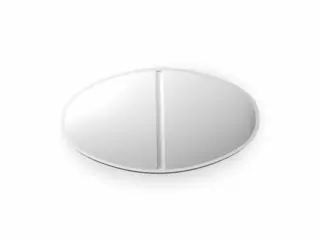Buy Theophylline Online in Australia – Fast, Hassle-Free Access
| Package | Dosage | Price | Price per Dose | |
|---|---|---|---|---|
| Dosage: 400mg | ||||
| 360 pill | 400mg | AUD618.46 | AUD1.72 | |
| 180 pill | 400mg | AUD335.79 | AUD1.86 | |
| 120 pill | 400mg | AUD246.40 | AUD2.05 | |
| 90 pill | 400mg | AUD205.33 | AUD2.27 | |
| 60 pill | 400mg | AUD154.60 | AUD2.59 | |
| 30 pill | 400mg | AUD94.20 | AUD3.16 | |

Theophylline Description
Overview of Theophylline
Theophylline is a medication that belongs to the class of drugs known as methylxanthines. It has been used for many years to treat respiratory conditions such as asthma and chronic obstructive pulmonary disease (COPD). Its main function is to relax the muscles in the airways, making breathing easier for individuals suffering from airway constriction. As a bronchodilator, Theophylline helps improve airflow and reduce symptoms like shortness of breath, wheezing, and coughing.
How the Medication Works
Theophylline works by inhibiting phosphodiesterase enzymes, leading to increased levels of cyclic AMP in the smooth muscle cells of the airways. This biochemical change causes muscle relaxation, which widens the air passages. Additionally, Theophylline has some anti-inflammatory properties, although its primary action is as a bronchodilator. The medication's effectiveness depends on maintaining specific blood levels, which is why careful dosing and monitoring are important during treatment.
Usage and Dosage
Theophylline is typically available in various forms, including tablets, capsules, and syrups. The dosage varies according to age, weight, and severity of the respiratory condition. Usually, healthcare providers start patients on a low dose and gradually adjust it to reach effective blood levels while minimizing side effects. It is important not to alter the dosage without consulting a healthcare professional. Regular blood tests are often necessary to monitor Theophylline levels in the bloodstream, ensuring they stay within the therapeutic range.
Benefits of Theophylline
Many patients find Theophylline to be an effective medication for managing their respiratory symptoms. Its long history of use underscores its reliability in improving quality of life for those with chronic respiratory diseases. Unlike some newer inhalers, Theophylline provides a systemic approach to treatment, which can be beneficial in more severe cases. When properly managed, it can reduce the frequency and severity of asthma attacks or COPD exacerbations.
Possible Side Effects
As with any medication, Theophylline can cause side effects. Mild symptoms such as nausea, stomach upset, or headaches are relatively common. More serious adverse effects might include irregular heartbeat, seizures, or nervousness, especially if blood levels become too high. This is why close monitoring and adherence to prescribed doses are essential. Patients are advised to report any unusual symptoms promptly to their healthcare provider.
Precautions and Interactions
Several factors can influence how Theophylline works, including other medications, dietary habits, and overall health. Drugs such as certain antibiotics, antidepressants, and other bronchodilators can interact with Theophylline, either increasing its levels or reducing its effectiveness. Smoking can also affect how the body processes the medication, often necessitating dosage adjustments. Patients with pre-existing conditions such as heart problems or liver disease should inform their doctors before starting treatment with Theophylline.
Conclusion
Theophylline remains a valuable medication in the management of respiratory diseases when used correctly. Its ability to improve breathing and reduce symptoms makes it a useful option for many patients. However, due to its narrow therapeutic window and potential for side effects, it requires careful dosing and regular monitoring. Proper patient education and communication with healthcare providers are key to maximizing its benefits and minimizing risks.
See Also


